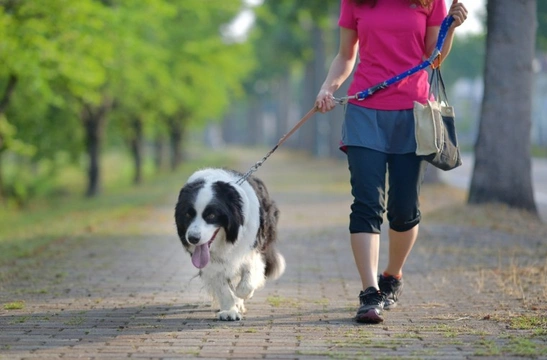
How to make sure your dog doesn’t burn their paws this summer
If you’ve ever burnt the sole of your foot or the palm of your hand, you will know how painful this can be, and how much of a challenge it can be to heal as we can’t really avoid either walking on our feet or using out hands without things getting very complicated.
A paw burn is just as painful to a dog, and can be a challenge to heal and manage too. But every year in the summer a number of dogs get potentially acute and very painful burns to the pads of their paws, from walking on overly hot surfaces.
It is really important to bear in mind the risk of paw burns in dogs from hot pavements and other hard surfaces during the summer, and to take steps to avoid this happening.
This article will explain how to make sure your dog doesn’t burn their paws this summer. Read on to learn more.
When do hard surfaces like roads and pavements get too hot?
The temperature of the air and the temperature of a pavement or road aren’t the same; so that even if the air temperature simply feels pleasantly warm, this may well mean that the pavement is too hot.
Pavements and asphalt, tarmac, concrete, patio paving slabs and other such surfaces hold the heat, and they will be quite a measure hotter than the air itself.
If the air temperature is around 25 degrees Celsius, this can result in the temperature of a pavement measuring around 50 degrees Celsius, and so being too hot to walk on barefoot. If you can’t walk barefoot on it, your dog cannot safely walk on it either!
Begin to bear in mind the affects of the heat and prepare to start checking and thinking about the surfaces your dog will be walking on when temperatures rise above 22 degrees Celsius.
Check surfaces before your dog steps on them
Any hard surface made of things like tarmac, slabs, bricks, cement and so on is apt to get hot in summer, and when you think about it that means a lot of potential places where paw burns could occur.
You need to think about this before, not after, your dog gets on them, because some such areas are not obvious. A hard, black pavement that is stretching ahead of you practically shimmering in the heat will tend to give itself away and make you think twice.
However, if you open the back door to let the dog out and the door opens onto a patio, the patio slabs might also be dangerously hot, and far less obvious or likely to occur to us to check.
Think then about any change of surface or where your dog is going to go before they get there. This may mean keeping them on a lead more than normal to stop them jumping onto a surface that may be too hot before you’ve had the chance to check it is ok.
Remember the effect of shade and full sun
A pavement that is in the shade for the best part of the day may still become too hot, but it is far likely to have a safe temperature for your dog to walk on than that same type of surface that’s been sitting baking in the sun since first thing in the morning.
You might, for instance, check a stretch of pavement and find that it feels ok to walk on; but if further along the path the pavement transitions from shade to sun, that area may be too hot, and you would need to check again.
Learn the signs that a dog is uncomfortable on a surface
It is really important to learn to spot signs that a dog is finding a surface uncomfortably hot, even if you’re vigilant about checking them first. Things can change as you walk along, and while you check a surface once or occasionally, your dog is in contact with it all the time.
If your dog starts behaving in a jumpy manner, dancing on the spot, wincing or hesitating, hopping about, or appearing to scurry across a surface, get them off it immediately (lifting them up if possible) and as soon as you can, check their paws over for damage.
Don’t go out for a walk you don’t know how to get back from
Say you head out for a walk early while the sun isn’t fully out and all of the pavements you need to walk on are cool enough. Will that still be the case when you turn for home?
You need to think about this carefully, as it is easy to “paint yourself into a corner” as it were, by going out with your dog and then being unable to go back by the same route because the temperature of the surfaces you need to pass over have heated up exponentially.
Remember that some surfaces retain heat after the sun goes down
Walking your dog in the early morning before surfaces heat up and then later in the evening when everything is cooling down helps to avoid overheating in your dog and also reduces the risk of paw burns. However, it can take a long time for surfaces like tarmac to cool down, as they do tend to retain heat.
Even when the sun has gone down, keep checking surfaces before your dog steps onto them to ensure they’re cool enough.



